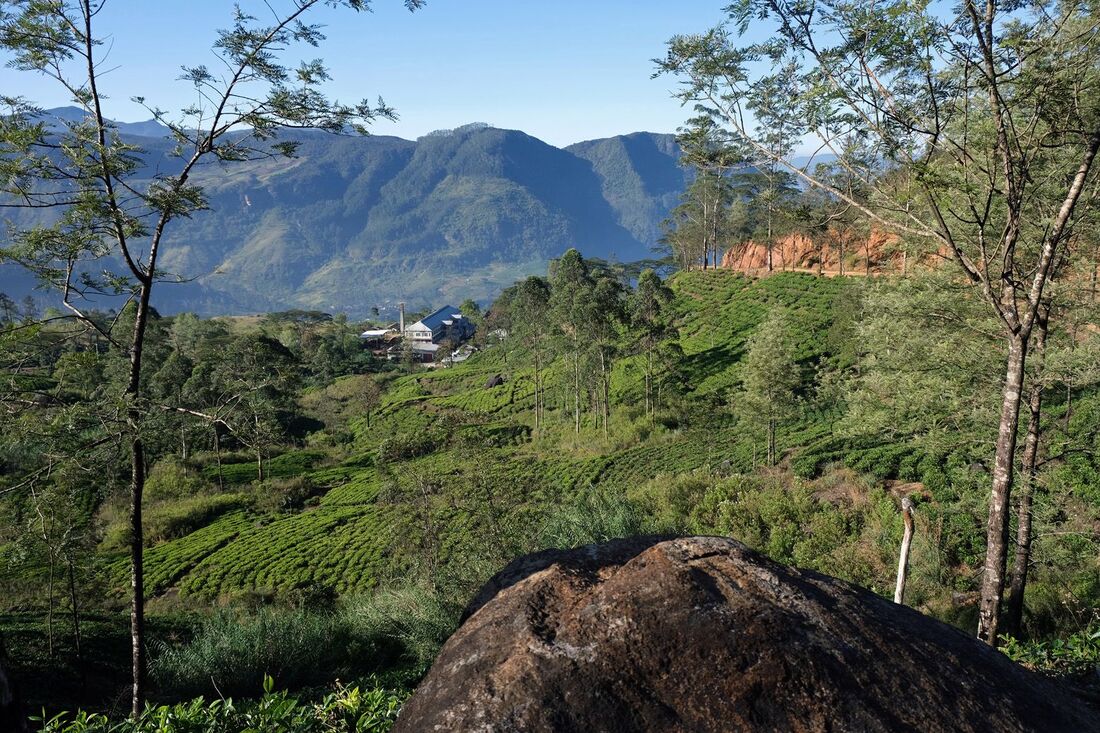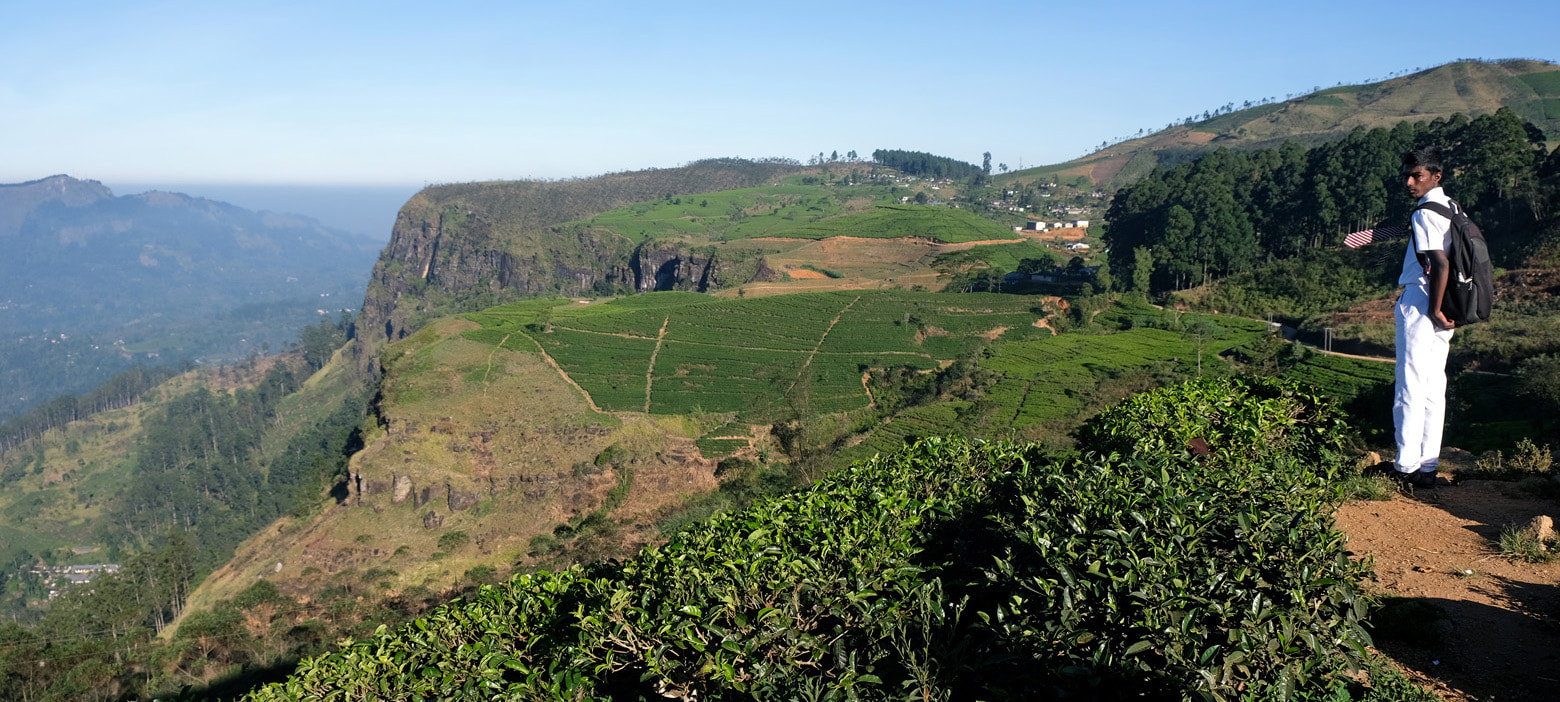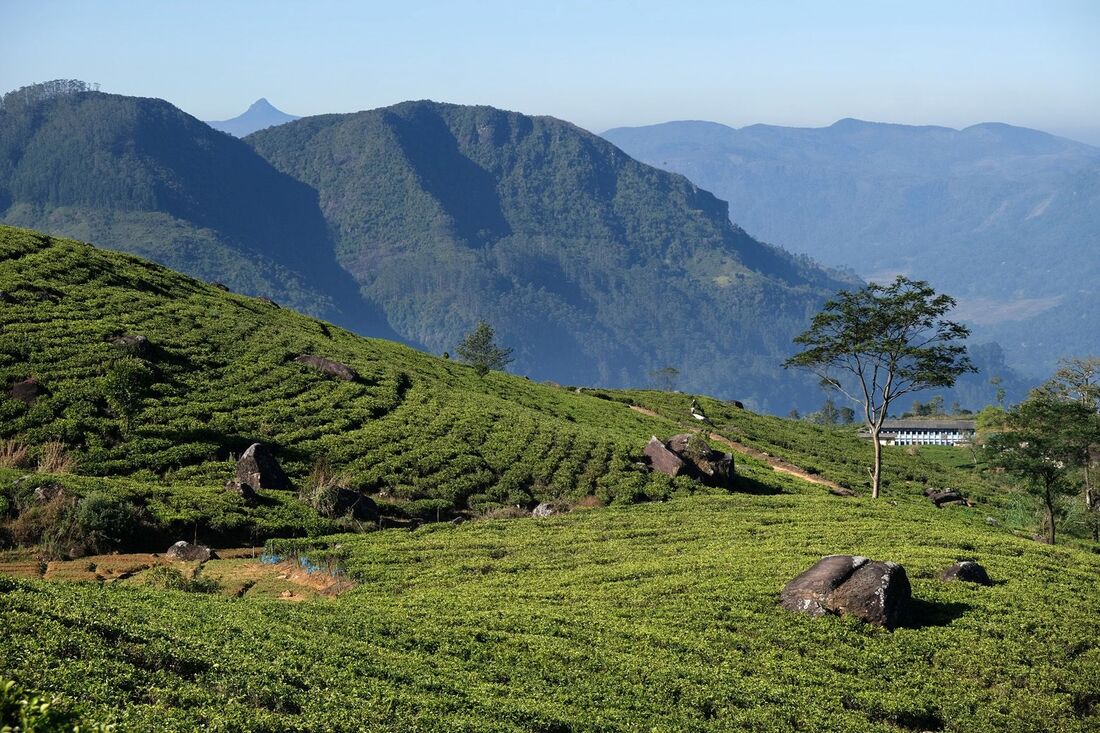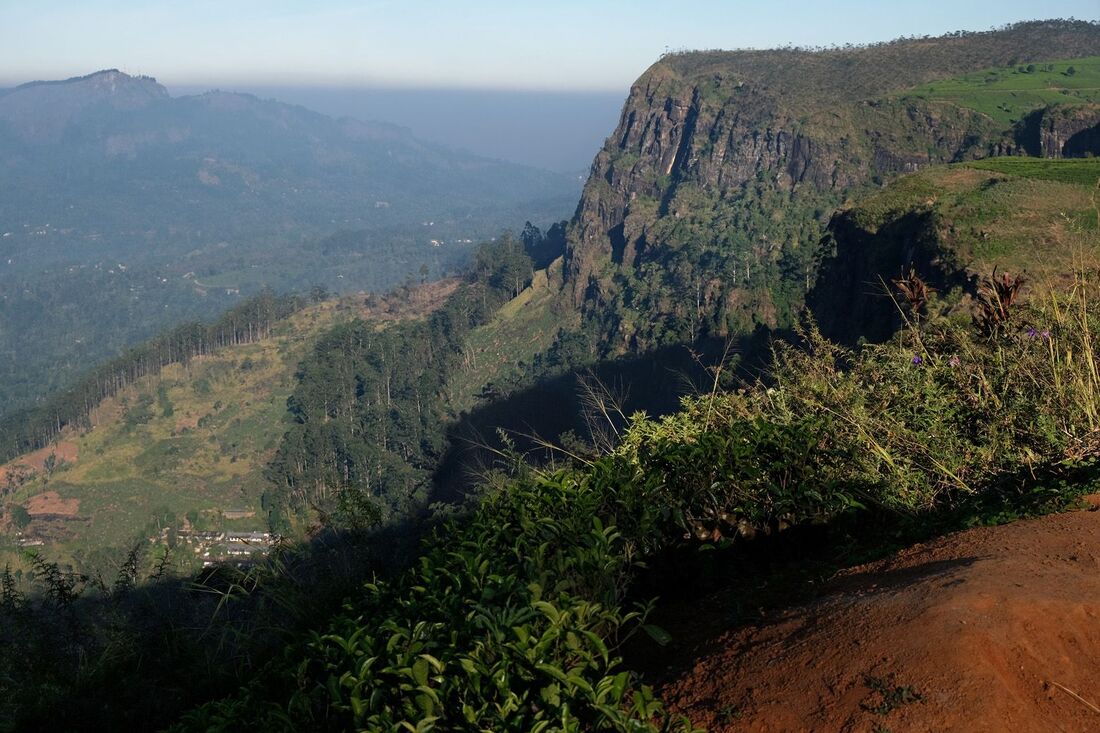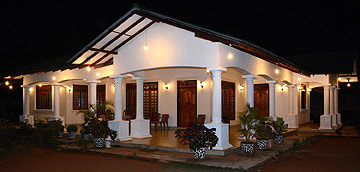Frotoft Estate deserves to be called Sri Lanka's most scenic tea plantation. Vertical cliffs separate Frotoft Tea Estate from the village of Ramboda, to which it belongs administrationally. Due to this location high above Ramboda, the panoramas from the so-called Frotoft view point overlooking the Kotmale Valley are even more breathtaking than the much more frequented vantage points along the A5 mountain road near Ramboda.
Location
Not many travellers find their way uphill to Frotoft. The reason is, that only bumpy dirt roads give access to Frotoft Estate, not suitable for cars and vans, much better manageable by jeeps or tuctucs, though even regular buses arrive at Frotoft at least once a day. However, motorbikers and mountainbikers in particularly could consider crossing the lonesome Frotoft Estate instead of using the busy main road A5 via Ramboda. The alternative Frotoft route on the way from Kandy to Nuwara Eliya branches off from the A5 in Pussellawa. Tellingly, the side road is called Frotoft road. It runs parallel to the main road before returning to the A5 highway after 21 km (13 miles) at Bluefield tea factory. However, most travellers crossing Frotoft are on their way further uphill to the starting point of the hiking trail to Chariot Path. The said starting point is at the upper end of the tea growing areas, just at the edge of the thick mountainous forest cover.
Driving distance from Kandy via Pussellawa to Frotoft View Point is 53 km (33 miles). From Nuwara Eliya via Bluefield it takes 23 km (14 miles). Bluefield Tea Factory and Ramboda are in 7 km (4 miles) and 10 km (6 miles) distance by road respectively.
Driving distance from Kandy via Pussellawa to Frotoft View Point is 53 km (33 miles). From Nuwara Eliya via Bluefield it takes 23 km (14 miles). Bluefield Tea Factory and Ramboda are in 7 km (4 miles) and 10 km (6 miles) distance by road respectively.
Frotoft Tea
Frotoft Estate is situated on the southern slope of the major mountain range of Sri Lanka's central highlands, more than 500 m higher than Ramboda. The tea of this hidden plantation is grown at altitudes between roughly 1400 and 1700 m (4600 to 5600 feet) above sea level, which is the same elevation as that of the more famous and larger Labookellie Estate on the way to Nuwara Eliya. Both said tea plantations of the Nuwara Eliya tea region are managed by Damro Tea now. Both produce high-grown teas, whereas the Damro estates around Pussellawa, such as Rothschild and Delta, produce mid-grown teas. Receiving both the south-west and north-east monsoon rains and being shrouded in mist for most of the time, Frotoft has perfect conditions for processing quality teas that can be sold in China and Japan. Frotoft Factory generally produces Small Leaf Teas, mainly Broken Orange Pekoe and Broken Orange Pekoe Fannings, the latter being stronger and suitable for milk teas. Frotoft Tea Estate was established in 1883, only ten years after the first shipment of Ceylon Tea arrived in London.
Scottish Name of Frotoft
Frotoft, like several other Ceylon tea plantations (e.g. Aberdeen, Balmoral, Clyde, Perth) got a Scottish name, given by Scottish planter families. The Scottish toponym "Frotoft" is originally that of a farmland property on the Orkney Islands, which is known for a 2.25 m (7.4 feet) tall menhir called "Long Stone". The ending "-toft" occurs quite frequently in toponyms of Scotland and northern parts of England and on the Isle of Man. This specific ending of place names is neither typically Gaelic nor English. Rather, it was intruduced by the Vikings from Scandinavia. It's known as "topt" in old Norse. The original meaning is not certain, but most likely it is related to Greek "domos" and Latin "domus" for "house".
